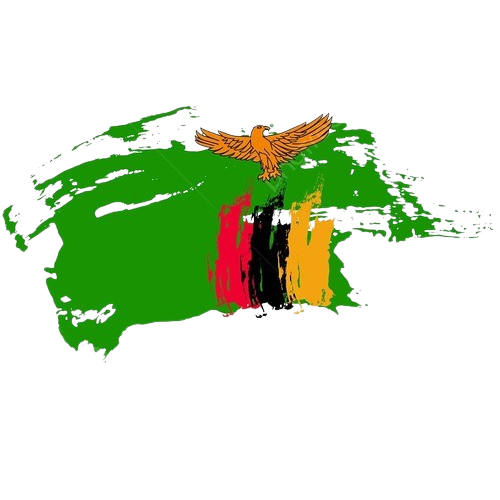How to create MS Paint clone with Python and PyGame?

In this article, we will create a simple MS paint program with Python and PyGame.
MS Paint is a simple program made by Microsoft, it allows users to create basic art and painting. Since its inception, MS Paint has been included with every version of Microsoft Windows. MS Paint provides features for drawing and painting in color and tools to create geometrical designs. In this section, we will try to make a simple copy of an MS paint with the help of a python module such as Pygame, random, and os. these modules will help us to make our simple canvas. Before moving further we will discuss some basic concepts of these modules:
- Pygame: It consists of computer graphics. Pygame is an open-source set of Python Modules. And as the name suggests, it can be used to create games You can code the games and then use specific commands to change them into an executable file that you can share with your friends to show them the work you have been doing. It includes graphics and sound libraries designed for use with the Python programming language.
- os: This module is used to interact with the operating system. This is a pre-installed module. The OS module in Python provides functions for interacting with the operating system. OS comes under Python’s standard utility modules.
- random: This module is used to generate random numbers. This is a pre-installed module. Python Random module is an in-built module of Python which is used to generate random numbers. These are pseudo-random numbers means these are not truly random. This module can be used to perform random actions such as generating random numbers, printing random a value for a list or string, etc.
Packages required
pip install pygame
Example 1: Making A simple Paint Application Using Python
In this example, we will create a canvas in which we can draw a colorful line whenever we press down our mouse key. Every time when we release the mouse click it will choose a different random color with the help of a random module. if the user double clicks then the color of the brush is changed.
In the code, the round function takes an argument of screen size, the color of the brush, the Start and end position of the axis, and the radius of the brush. with the help of these arguments, we will draw a colorful line.
Python3
import pygameimport random# Making canvasscreen = pygame.display.set_mode((900, 700))# Setting Titlepygame.display.set_caption('GFG Paint')draw_on = Falselast_pos = (0, 0)# Radius of the Brushradius = 5def roundline(canvas, color, start, end, radius=1): Xaxis = end[0]-start[0] Yaxis = end[1]-start[1] dist = max(abs(Xaxis), abs(Yaxis)) for i in range(dist): x = int(start[0]+float(i)/dist*Xaxis) y = int(start[1]+float(i)/dist*Yaxis) pygame.draw.circle(canvas, color, (x, y), radius)try: while True: e = pygame.event.wait() if e.type == pygame.QUIT: raise StopIteration if e.type == pygame.MOUSEBUTTONDOWN: # Selecting random Color Code color = (random.randrange(256), random.randrange( 256), random.randrange(256)) # Draw a single circle wheneven mouse is clicked down. pygame.draw.circle(screen, color, e.pos, radius) draw_on = True # When mouse button released it will stop drawing if e.type == pygame.MOUSEBUTTONUP: draw_on = False # It will draw a continuous circle with the help of roundline function. if e.type == pygame.MOUSEMOTION: if draw_on: pygame.draw.circle(screen, color, e.pos, radius) roundline(screen, color, e.pos, last_pos, radius) last_pos = e.pos pygame.display.flip()except StopIteration: pass # Quitpygame.quit() |
Output:

Example 2: Making a paint application to draw and erase in Canvas
In this example, We made a canvas to draw with eight different colors to paint. It also includes features like a clear button which will clear the screen and give us a new canvas to draw, and a + and – button which increases or decrease the brush size. Additionally, it also includes a clock timer to practice painting at a given interval of time.
Python3
# import libraryimport pygame import randompygame.init()# Setting window sizewin_x = 500win_y = 500win = pygame.display.set_mode((win_x, win_y))pygame.display.set_caption('Paint')# Class for drawingclass drawing(object): def __init__(self): '''constructor''' self.color = (0, 0, 0) self.width = 10 self.height = 10 self.rad = 6 self.tick = 0 self.time = 0 self.play = False # Drawing Function def draw(self, win, pos): pygame.draw.circle(win, self.color, (pos[0], pos[1]), self.rad) if self.color == (255, 255, 255): pygame.draw.circle(win, self.color, (pos[0], pos[1]), 20) # detecting clicks def click(self, win, list, list2): pos = pygame.mouse.get_pos() # Localização do mouse if pygame.mouse.get_pressed() == (1, 0, 0) and pos[0] < 400: if pos[1] > 25: self.draw(win, pos) elif pygame.mouse.get_pressed() == (1, 0, 0): for button in list: if pos[0] > button.x and pos[0] < button.x + button.width: if pos[1] > button.y and pos[1] < button.y + button.height: self.color = button.color2 for button in list2: if pos[0] > button.x and pos[0] < button.x + button.width: if pos[1] > button.y and pos[1] < button.y + button.height: if self.tick == 0: if button.action == 1: win.fill((255, 255, 255)) self.tick += 1 if button.action == 2 and self.rad > 4: self.rad -= 1 self.tick += 1 pygame.draw.rect( win, (255, 255, 255), (410, 308, 80, 35)) if button.action == 3 and self.rad < 20: self.rad += 1 self.tick += 1 pygame.draw.rect( win, (255, 255, 255), (410, 308, 80, 35)) if button.action == 5 and self.play == False: self.play = True game() self.time += 1 if button.action == 6: self.play = False self.time = 0 for button in list2: if button.action == 4: button.text = str(self.rad) if button.action == 7 and self.play == True: button.text = str(40 - (player1.time // 100)) if button.action == 7 and self.play == False: button.text = 'Time'# Class for buttonsclass button(object): def __init__(self, x, y, width, height, color, color2, outline=0, action=0, text=''): self.x = x self.y = y self.height = height self.width = width self.color = color self.outline = outline self.color2 = color2 self.action = action self.text = text # Class for drawing buttons def draw(self, win): pygame.draw.rect(win, self.color, (self.x, self.y, self.width, self.height), self.outline) font = pygame.font.SysFont('comicsans', 30) text = font.render(self.text, 1, self.color2) pygame.draw.rect(win, (255, 255, 255), (410, 446, 80, 35)) # pygame.draw.rect(win, (255, 255, 255), (410, 308, 80, 35)) win.blit(text, (int(self.x+self.width/2-text.get_width()/2), int(self.y+self.height/2-text.get_height()/2)))def drawHeader(win): # Drawing header space pygame.draw.rect(win, (175, 171, 171), (0, 0, 500, 25)) pygame.draw.rect(win, (0, 0, 0), (0, 0, 400, 25), 2) pygame.draw.rect(win, (0, 0, 0), (400, 0, 100, 25), 2) # Printing header font = pygame.font.SysFont('comicsans', 30) canvasText = font.render('Canvas', 1, (0, 0, 0)) win.blit(canvasText, (int(200 - canvasText.get_width() / 2), int(26 / 2 - canvasText.get_height() / 2) + 2)) toolsText = font.render('Tools', 1, (0, 0, 0)) win.blit(toolsText, (int(450 - toolsText.get_width() / 2), int(26 / 2 - toolsText.get_height() / 2 + 2)))def draw(win): player1.click(win, Buttons_color, Buttons_other) pygame.draw.rect(win, (0, 0, 0), (400, 0, 100, 500), 2) # Drawing button space pygame.draw.rect(win, (255, 255, 255), (400, 0, 100, 500),) pygame.draw.rect(win, (0, 0, 0), (0, 0, 400, 500), 2) # Drawing canvas space drawHeader(win) for button in Buttons_color: button.draw(win) for button in Buttons_other: button.draw(win) pygame.display.update()def main_loop(): run = True while run: keys = pygame.key.get_pressed() for event in pygame.event.get(): if event.type == pygame.QUIT or keys[pygame.K_ESCAPE]: run = False draw(win) if 0 < player1.tick < 40: player1.tick += 1 else: player1.tick = 0 if 0 < player1.time < 4001: player1.time += 1 elif 4000 < player1.time < 4004: gameOver() player1.time = 4009 else: player1.time = 0 player1.play = False pygame.quit()def game(): object = ['Casa', 'cachoro', 'caneta', 'bola de futebol', 'caneca', 'Computador', 'Chocolate', 'Jesus', 'Celular', 'Iphone', 'Teclado(instrumento)', 'teclado(computador)'] font = pygame.font.SysFont('comicsans', 40) font2 = pygame.font.SysFont('comicsans', 25) text = font.render('Sua Palavra é: ' + object[random.randint(0, (len(object) - 1))], 1, (255, 0, 0)) Aviso = font2.render('Somente deve olhar essa tela a pessoa que vai desenhar:', 1, (255, 0, 0)) Aviso2 = font.render('Agora pode olhar', 1, (255, 0, 0)) i = 0 time = 1500 while i < 1500: pygame.time.delay(10) i += 1 icount = int((1500/100) - (i // 100)) time = font.render(str(icount), 1, (255, 0, 0)) win.fill((255, 255, 255)) if int(icount) > 10: win.blit(Aviso, (int(5), int(250 - Aviso.get_height() / 2))) elif 5 < int(icount) < 11: win.blit(Aviso, (int(5), int(100 - text.get_height() / 2))) win.blit(text, (int(250 - text.get_width() / 2), int(250 - text.get_height() / 2))) else: win.blit(Aviso2, (int(250 - Aviso2.get_width() / 2), int(250 - Aviso2.get_height() / 2))) win.blit(time, (int(250 - time.get_width() / 2), 270)) pygame.display.update() for event in pygame.event.get(): if event.type == pygame.QUIT: i = 1001 pygame.quit() win.fill((255, 255, 255))# Ending Functiondef gameOver(): font = pygame.font.SysFont('comicsans', 40) text = font.render('GAME OVER', 1, (255, 0, 0)) i = 0 while i < 700: pygame.time.delay(10) i += 1 win.fill((255, 255, 255)) win.blit(text, (int(250 - text.get_width() / 2), 250 - text.get_height() / 2)) pygame.display.update() print(7 - (i // 100)) for event in pygame.event.get(): if event.type == pygame.QUIT: i = 1001 pygame.quit() win.fill((255, 255, 255))player1 = drawing()# Fill colored to our paintwin.fill((255, 255, 255))pos = (0, 0)# Defining color buttonsredButton = button(453, 30, 40, 40, (255, 0, 0), (255, 0, 0))blueButton = button(407, 30, 40, 40, (0, 0, 255), (0, 0, 255))greenButton = button(407, 76, 40, 40, (0, 255, 0), (0, 255, 0))orangeButton = button(453, 76, 40, 40, (255, 192, 0), (255, 192, 0))yellowButton = button(407, 122, 40, 40, (255, 255, 0), (255, 255, 0))purpleButton = button(453, 122, 40, 40, (112, 48, 160), (112, 48, 160))blackButton = button(407, 168, 40, 40, (0, 0, 0), (0, 0, 0))whiteButton = button(453, 168, 40, 40, (0, 0, 0), (255, 255, 255), 1)# Defining other buttonsclrButton = button(407, 214, 86, 40, (201, 201, 201), (0, 0, 0), 0, 1, 'Clear')smallerButton = button(407, 260, 40, 40, (201, 201, 201), (0, 0, 0), 0, 2, '-')biggerButton = button(453, 260, 40, 40, (201, 201, 201), (0, 0, 0), 0, 3, '+')sizeDisplay = button(407, 306, 86, 40, (0, 0, 0), (0, 0, 0), 1, 4, 'Size')playButton = button(407, 352, 86, 40, (201, 201, 201), (0, 0, 0), 0, 5, 'Play')stopButton = button(407, 398, 86, 40, (201, 201, 201), (0, 0, 0), 0, 6, 'Stop')timeDisplay = button(407, 444, 86, 40, (0, 0, 0), (0, 0, 0), 1, 7, 'Time')Buttons_color = [blueButton, redButton, greenButton, orangeButton, yellowButton, purpleButton, blackButton, whiteButton]Buttons_other = [clrButton, smallerButton, biggerButton, sizeDisplay, playButton, stopButton, timeDisplay]main_loop()list = pygame.font.get_fonts()print(list) |
Output:






